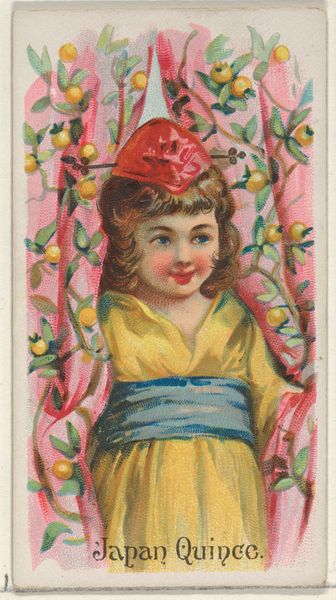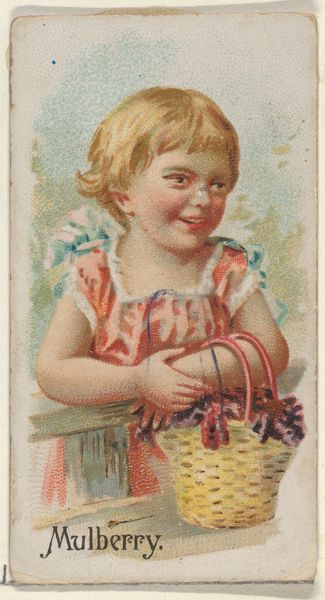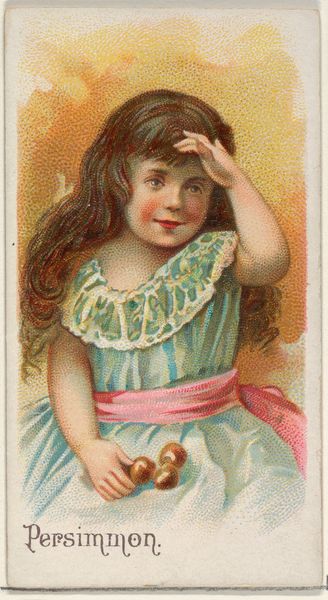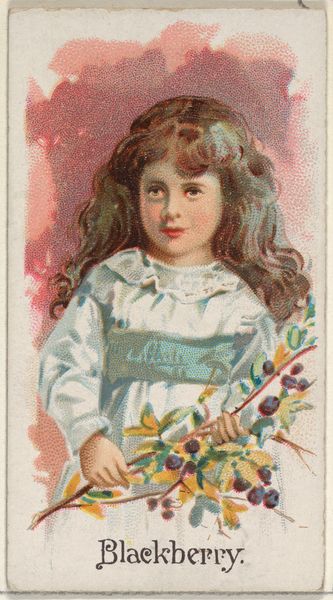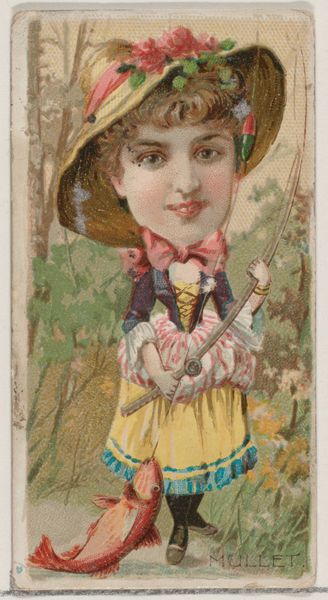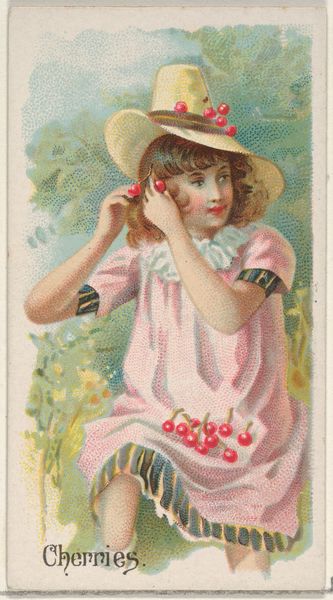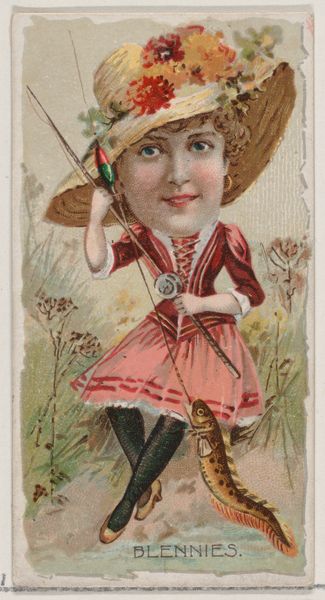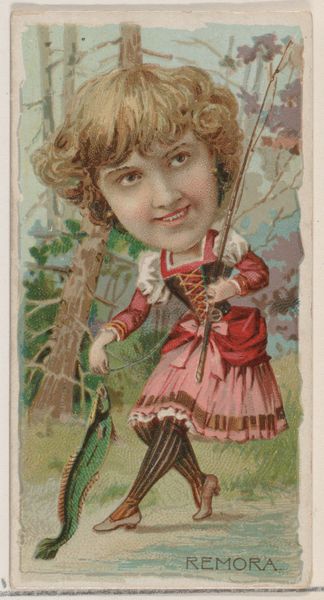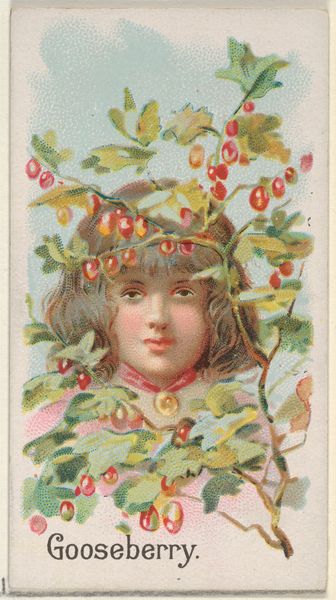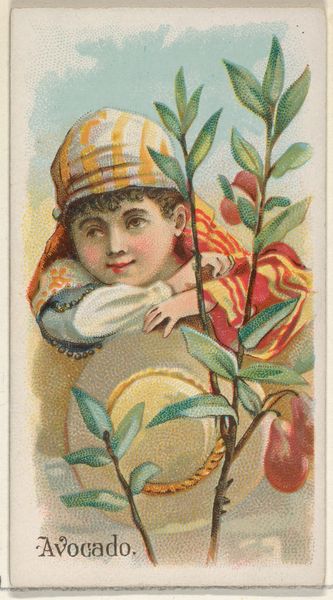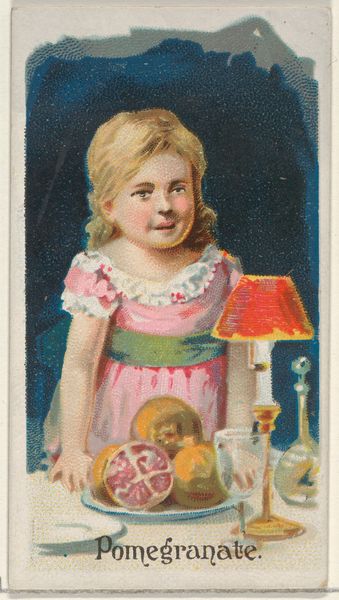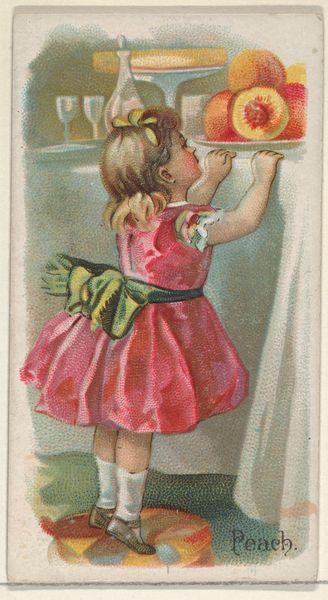
Greengage, from the Fruits series (N12) for Allen & Ginter Cigarettes Brands 1891
0:00
0:00
drawing, print, watercolor
#
portrait
#
drawing
#
art-nouveau
# print
#
watercolor
#
fruit
#
art nouveau
#
watercolour illustration
Dimensions: Sheet: 2 3/4 x 1 1/2 in. (7 x 3.8 cm)
Copyright: Public Domain
Curator: This is "Greengage, from the Fruits series," created in 1891 for Allen & Ginter Cigarettes. What do you make of it? Editor: It's… charmingly saccharine. The pink dress, the plump cheeks—a perfect period piece of idealized girlhood, packaged for consumption. I see it has elements that suggest art nouveau. Curator: Precisely! Note how the delicate watercolor and print medium lend themselves to the overall Art Nouveau aesthetic. The portrait utilizes curvilinear patterns to create the image, and it embodies this visual language across every plane. It also seems inspired by the portrait style which lends to the brands and label production of the time. Editor: I’m particularly interested in the greengages she’s holding—are they meant to suggest abundance? The title explicitly tells us this print forms part of an ad campaign connected with Allen & Ginter's Cigarettes Brands; these were collectible, trading-card-style inserts in cigarette packs, weren’t they? So, really the 'art' served to push merchandise, to connect to consumers of all levels, not simply consumers of higher income. Curator: The placement within cigarette packs certainly broadens access. Still, I’d argue that the formal elements, the composition—the strategic placement of the child amongst the boughs—evokes a sense of innocence and almost mythical connection with nature. This connection between women and nature goes far beyond simply promoting an advertisement, as many critics, notably structuralists, discuss the underlying symbolic relationships with an image, in ways both that the maker is and is not consciously aware of. Editor: I can’t help but feel that focus on the cigarette industry—the materials used in production, the distribution methods—reveals much about consumer culture and how representations are shaped. How women in general are associated and consumed in consumer goods during this time. While some might focus on how it captures certain cultural mythologies, I'm intrigued by what its means of circulation say about the society that created and consumed it. Curator: A point well-taken. Though my preference remains for the analysis of form and structure within the art, and the many conceptual systems that shape it from both a historical and timeless point of view, I realize it can prove important to see this "art" for what it really represents as well. Editor: Ultimately, approaching it from a materialist angle grants one a fuller picture of not just the image, but also its place within a wider framework of power, production, and consumerism. I appreciate that Allen & Ginter can still bring our contrasting viewpoints to bear on the significance of this simple portrait.
Comments
No comments
Be the first to comment and join the conversation on the ultimate creative platform.
